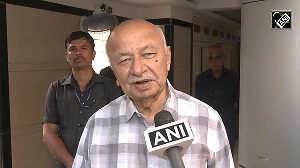Asia provided some of Formula One's highlights in 2007, with memorable races in China and Japan, and the region will be even more in the thick of the action next season.
The first floodlit night race in Singapore, as well as the first Indian team in tycoon Vijay Mallya's takeover of Spyker, will add to surging interest in an area of increasing importance to the sport.
"Somebody once told me in America that Asians are slow starters, but once they get up to speed they go past pretty quick," Mallya said at Sunday's season-ending Brazilian Grand Prix.
"I think the Asian giant is awake and that has been propelled by the awakening of the giant within the giant which is India."
Mallya, whose business interests range from Scotch Whisky to commercial aviation, has asked the governing body to rename Spyker as Force India.
He believes India, with a booming economy and youthful population, is ready for fuller immersion into Formula One.
"A lot of young people in India want to have an alternative to cricket and I think Formula One is the right sport," said Mallya.
INDIAN FIRST
There is still some way to go before another Indian driver follows Narain Karthikeyan, who raced for Jordan in 2005, on to the Grand Prix starting grid but the signs are still encouraging.
This year had a first with the Indian anthem sounding out at a Grand Prix weekend when Karun Chandhok took his first victory in the GP2 support series at Spa in Belgium.
"I think he is at least a year away [from Formula One]" said Mallya. "I know that he is committed to GP2 for 2008 so we will see how he performs."
India is also due to host a Grand Prix in 2010, with South Korea pencilled in for then as well and Abu Dhabi making its debut in 2009.
Singapore will literally light up the championship when it hosts Asia's first street race in late September, with the South East Asian state appointing a contractor last week to illuminate the circuit.
If those races, in addition to the existing rounds in China, Malaysia, Japan, Australia and Bahrain, will make it more of a world championship than ever, much still has to be done before Asia mounts a genuine challenge on the track.
MAJOR DISAPPOINTMENT
The season closed with three Japanese drivers on the starting grid for the first time since 1995 but the year must go down as a major disappointment for that country's major players.
Honda, championship runners-up in 2004 and winners in Hungary last year with Briton Jenson Button, went from contenders to also-rans with a speed that they rarely showed on the track.
They failed to score any points for the first seven races, while tiny Honda-powered Super Aguri had banked four already before Button finished eighth in France to break the factory team's blank.
Toyota, with probably the biggest budget of any team, performed dismally in a continuation of their descent from the heights of fourth place overall in 2005 to midfield obscurity.
The year ended with them sixth overall -- it would have been seventh had McLaren not been stripped of all their points -- and saying farewell to the highly paid but unproductive Ralf Schumacher and French tester Franck Montagny.
Only one of the Japanese drivers, Super Aguri's Takuma Sato, scored any points.








 © 2025
© 2025